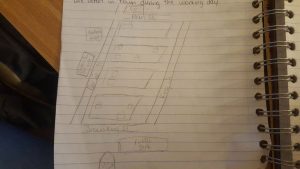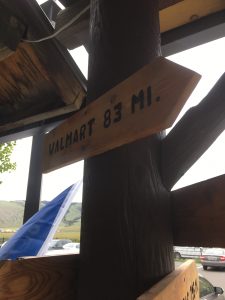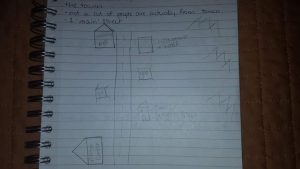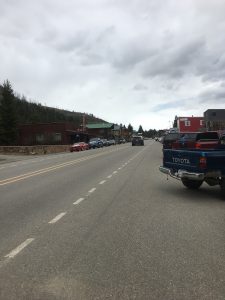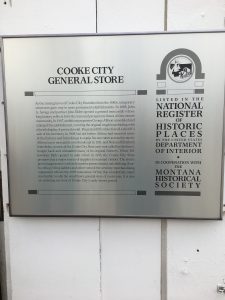Bison have historically roamed across the West since the early 1800s with overall population numbers reaching as high as 65 million at one point. Due to the appeal of poaching and hunting bison, when 1890 rolled around, fewer than 1,000 bison were said to be alive. In the year 1902, a mere 23 bison were thought to be living in the park. The massive decline in the bison population led to an effort to preserve the bison species. While a mere 23 bison were living freely in Yellowstone, a small herd of 21 bison was raised and managed as if they were cattle in an attempt to revitalize the bison population. Although these bison were not allowed to interact and roam with the wild bison, over time, both bison herds helped to revive the overall bison population. Come 1954, three distinct herds could be identified in the park with a total of 1,477 bison living in the park. The manipulated management of the bison population eventually stopped in 1968, allowing the population to adjust naturally to the environment. In 1982. Montana instituted a public hunt that allowed people to kill bison that were not inside the boundaries of Yellowstone. This public hunt was halted in 1989 due to the controversy surrounding it. In 1995 it was established that bison at Montana’s northern border of the park would be captured to then be either slaughtered or shot, but at the western border bison would be tested for brucellosis and would only be slaughtered if they tested positive. By the winter of 1996, approximately 3,500 bison were known to be in the park, but by 1997, only 1,200-1,500 bison were believed to be in the park. Come August of 2016, the bison population had raised itself to approximately 5,500. The bison population continues to fluctuate both naturally and unnaturally throughout the years as humans have began to cull part of the herds due to the average 10-17% herd population increase that happens every year.
When it comes to bison their large population is dealt with every winter due to the fact that there are too many in the limited area of Yellowstone. If the bison population was allowed to grow with nothing affecting it, overgrazing and possibly mass starvation would be a problem when it comes to other animal species. The bison population increases ten times faster than the human population grows worldwide. Population control is also necessary because predation by bears and wolves does not have a large enough effect on the bison population, this is due to the fact that they are difficult to attack since they protect themselves as a group. For the winter of 2016-2017 it was decided that 900 to 1,300 animals needed to be removed through either hunting outside of the park or capture and transport to the Stephens Creek facility.
Currently bison are treated differently than other wildlife in the state of Montana. Legislation has been made that prohibits moving live bison to other conservation areas, which in turn results in few options for population control. Other wildlife on the other hand are allowed to move in and out of the park freely. The reasoning behind the legislation is the possible transmission of Brucellosis to cattle, and the concerns when it comes to the safety of humans as well as property damage that may be caused. What is interesting though is the fact that elk carry brucellosis, but have not been treated the same as bison. Due to the fact that bison are treated differently population control has to be dealt with every winter.
Each year the bison population within Yellowstone undergoes a culling process. The bison are slaughtered or hunted each year in order to lower the total number of bison in the park by roughly 1000 animals, which is nearly a fifth of the total bison roaming the park. A large number of advocates of this process claim that the culling process is necessary in order to make sure that the bison within the park do not spread brucellosis, a disease which theoretically causes domestic cattle to abort their babies once it is shared with them. However, this argument does not seem to hold much truth, since as of 2011 there has not been a single reported case of bison transmitting the disease to cattle. However, many biologist still believe that culls are necessary to practically and sustainably manage the growing number of bison within the park. Since the bison do not migrate over such long distances as they once did, culling is used to thin the herd and prevent unnecessary destruction of park natural resources, such as various native grasses that are important to the livelihood of all of the parks animals. The current population of bison already eats 70-90% of the parks grasses annually, making culling seem as if it is almost an absolute necessity to preserve the longevity of the park. The main reason bison are unable to roam as they once did is because of the large amount of ranches that are located outside of the park, making natural migration virtually impossible. However, bison have still been known to roam further outside of the boundaries during the winter onto ranches in search of food, which causes even more public outcry over current herd numbers and the need for culling. So, as it currently stands, culling is a “necessary evil” and there is no way to keep the balance of biodiversity without it, until scientists and citizens living around the park can decide what amount of bison are acceptable for the public longevity of the park and the private longevity of the ranchers.
In order to get involved please join in the discussion of this issue by sharing our blog and commenting about your thoughts on the issue. You can also use our hashtag #YaHerdThat to spread the word on social media! If you would like to learn more, please visit the resources listed below and follow us along as we go on this journey!
Additional Resources:
Bison in Yellowstone National Park
https://www.nps.gov/yell/learn/nature/bisonmgnt.htm
http://www.npr.org/2017/04/16/524242247/slaughter-of-yellowstone-bison-at-the-center-of-culture-war
https://www.nps.gov/yell/learn/nature/bison.htm
THE HISTORY OF BISON IN YELLOWSTONE NATIONAL PARK
Why Can’t Bison Roam on Public Lands?
